Former Titan passenger says 'you accept a lot of risk' when boarding submersible
Aaron Newman, who toured the Titanic wreckage on the Titan vessel, tells ‘Fox & Friends’ about his trip and the safety risks involved.
BOSTON – The search for the missing OceanGate Titan submersible came to a tragic end Thursday when search-and-rescue teams discovered a "debris field" on the ocean floor near the wreck of the Titanic, where the crew was headed before losing contact with their surface vessel Sunday morning.
"The debris is consistent with the catastrophic loss of the pressure chamber. Upon this determination, we immediately notified the families," U.S. Coast Guard Rear Admiral John Mauger told reporters. "On behalf of the United States Coast Guard and the entire unified command, I offer my deepest condolences to the families."
The announcement came hours after the USCG alerted the public that a robotic vehicle made the discovery.
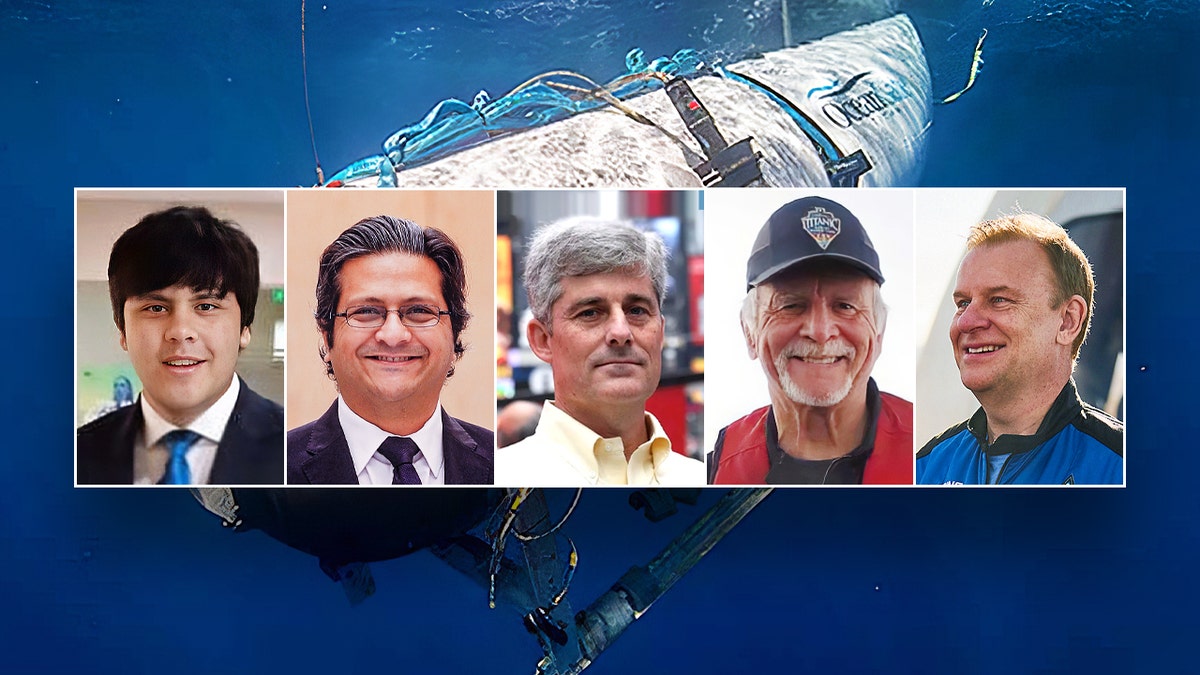
Inset, from left: Suleman Dawood, Shahzada Dawood, Stockton Rush, Paul-Henry Nargeolet and Hamish Harding. Background: An image of the OceanGate Titan submersible. (Engro Corporation, REUTERS/Shannon Stapleton, @OceanGateExped/Twitter, Felix Kunze/Blue Origin via AP, Ocean Gate / Handout/Anadolu Agency via Getty Images)
"A debris field was discovered within the search area by an ROV [remotely operated vehicle] near the Titanic," the USCG said just before noon. Experts were evaluating the information.
The Titan lost contact with its surface vessel, the Polar Prince, around one hour and 45 minutes into its dive Sunday morning, about 900 miles east of Cape Cod, Massachusetts, and around 400 miles southeast of St John's, in Canada's Newfoundland.
"We understand debris has been found which may be the landing frame and a rear cover of the tail instrument compartment of the Titan lost on previous dives," Richard Garriott, the president of the Explorers Club which had members on the missing sub, wrote to the group, according to a spokesman. "We hear there may be additional debris, but no updated visuals of the submersible."
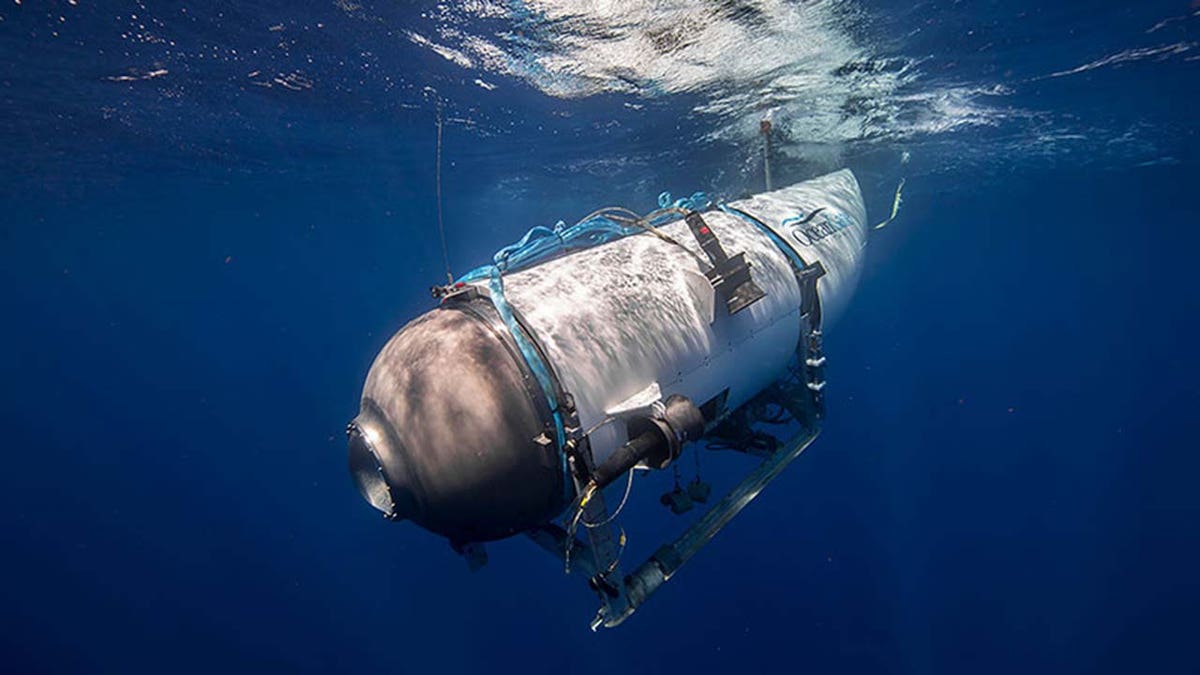
This file image provided by OceanGate shows the Titan submersible descending into the ocean. (OceanGate Expeditions)
Inside the vessel were OceanGate CEO Stockton Rush; British businessman turned adventurer Hamish Harding; father-and-son Shahzada and Suleman Dawood, who are members of one of Pakistan’s wealthiest families; and Paul-Henry Nargeolet, a former French navy officer and leading Titanic expert.
"These men were true explorers who shared a distinct spirit of adventure, and a deep passion for exploring and protecting the world’s oceans," OceanGate said in a statement. "Our hearts are with these five souls and every member of their families during this tragic time."
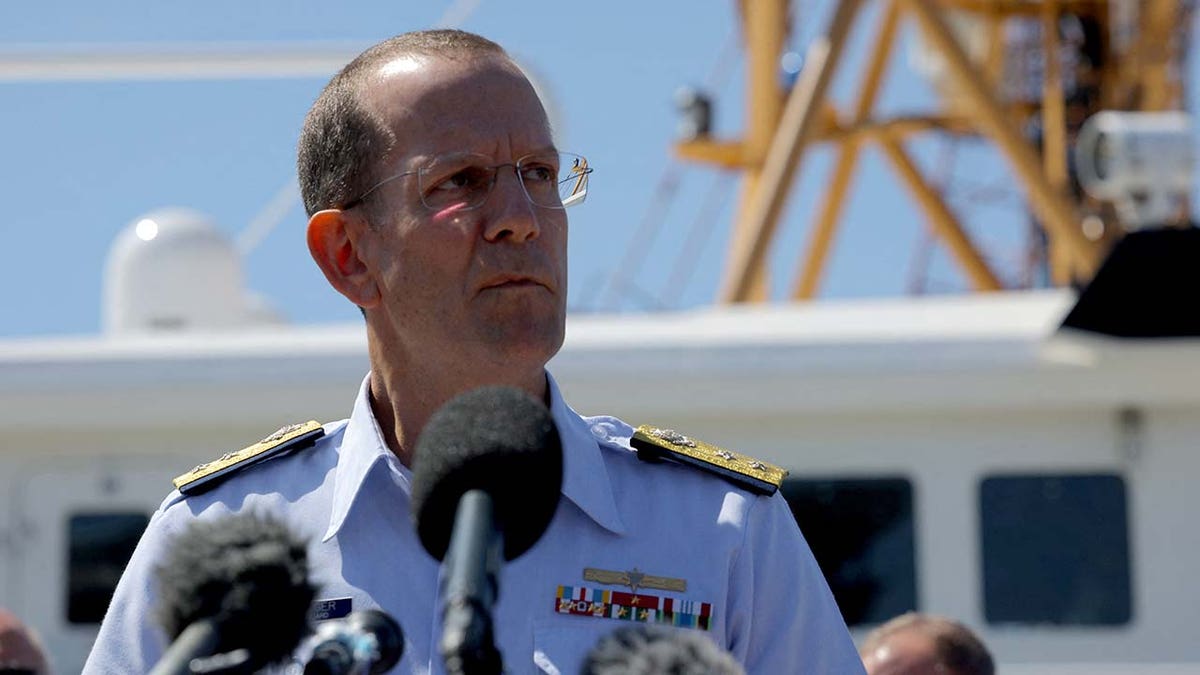
U.S. Coast Guard Rear Admiral John Mauger speaks during a press conference updating about the search of the missing OceanGate Expeditions submersible in Boston on Thursday. (REUTERS/Brian Snyder)
The USCG headed a unified command that involved commercial assets, research vehicles and military counterparts from Canada, France and the U.K.
‘BANGING’ NOISES CONFIRMED IN DESPERATE DEEP-SEA SEARCH FOR MISSING TITAN SUB BUT SOURCE UNKNOWN
Search-and-rescue crews spent the week deploying high-tech buoys, ROVs, surface vessels and aerial searches in an effort to pinpoint the missing sub's location.

Pelagic Research Services' Odysseus 6k ROV is seen in a file image. The ROV found a "debris field" in the search area for the missing OceanGate Titan submersible near the Titanic in the North Atlantic. (Pelagic Research Services)
The ROVs will remain in the area to gather more information, Mauger said, but he said he could not estimate the prospects of whether the victims' remains could be recovered.
"This is incredibly unforgiving environment down there on the sea floor, and the debris is consistent with a catastrophic implosion of the vessel, and so we'll continue to work and search the area down there, but I don’t have an answer," he said.
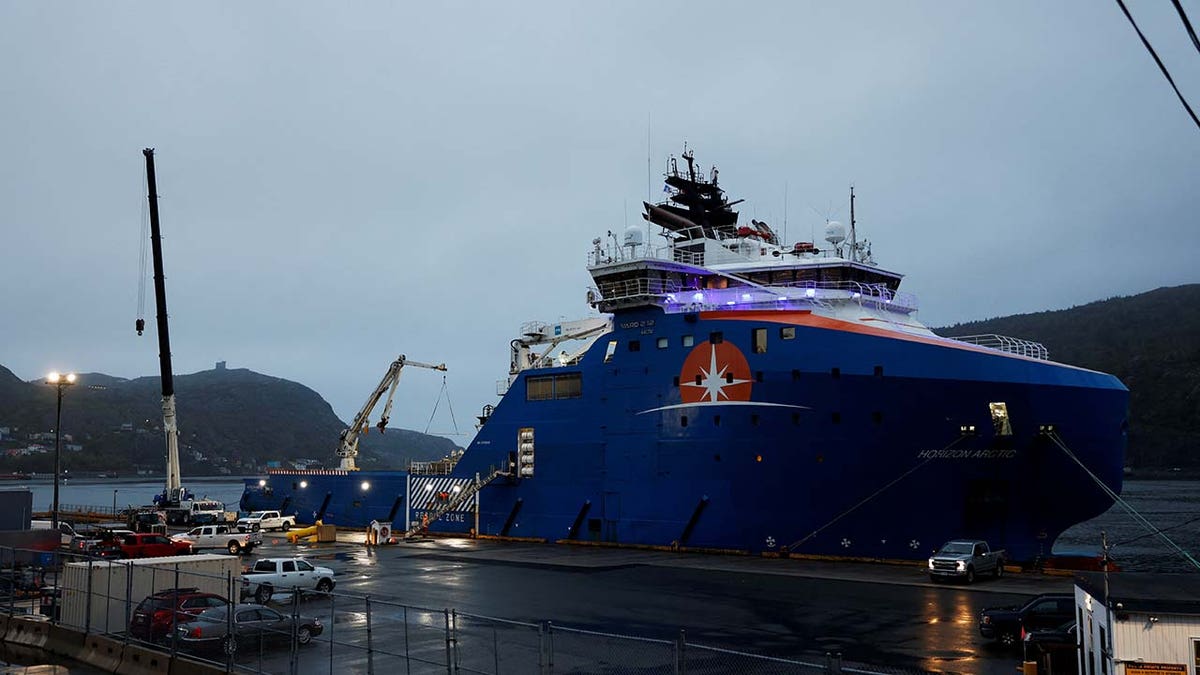
Equipment that was flown in by Air Force transport planes is loaded onto the offshore vessel Horizon Arctic before its deployment to the search area of a missing OceanGate Expeditions submersible in the port of St. John’s, Newfoundland, Canada, on Tuesday. (REUTERS/David Hiscock)
As of Thursday morning, several ROVs with the ability to reach the ocean floor had been deployed in the Atlantic as the Titan’s estimated initial supply of 96 hours of oxygen dwindled — including the Victor 6000, which descended from the French L'Atalante research vessel to the ocean floor.
A Canadian vessel, the Horizon Arctic, also deployed its ROV on Thursday morning, according to the USCG.
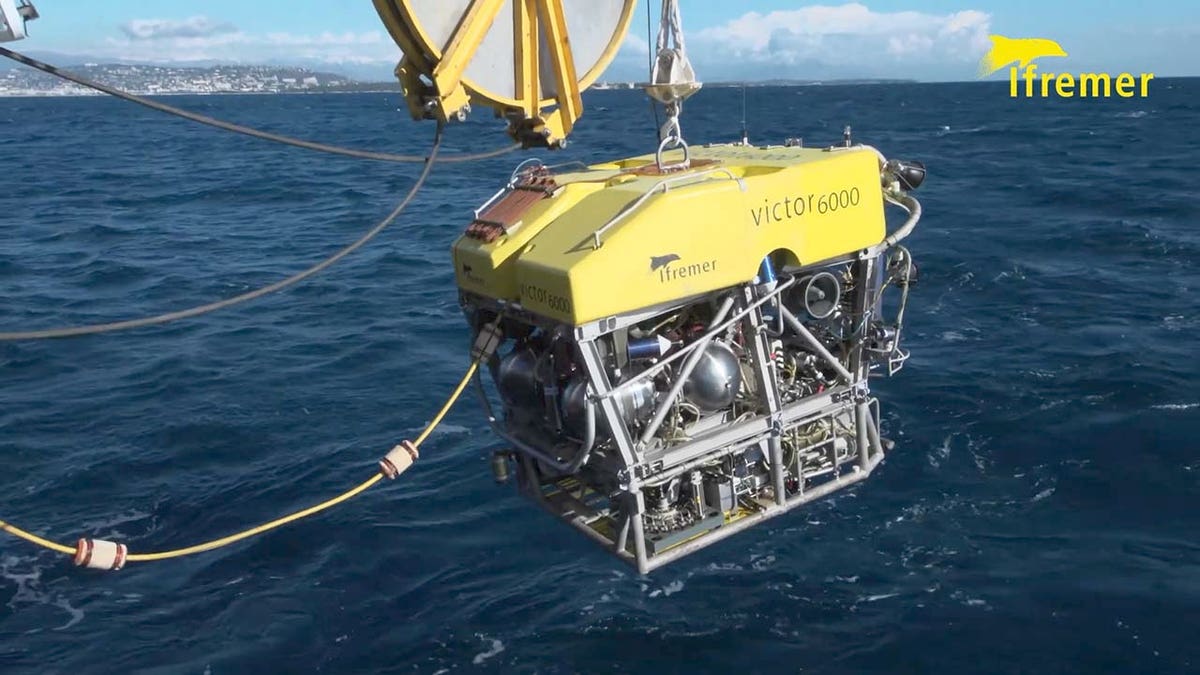
The Victor 6000 is an unmanned French robot which can dive up to 6,000 meters. It has arms that can be remotely controlled to cut cables or otherwise help release a stuck vessel, but it doesn't have the capability of lifting the submersible on its own. (Ifremer handout via EYEPRESS)
On Tuesday and Wednesday, Canadian pilots picked up repeated sounds during their search.
Carl Hartsfield, a retired Navy captain and a scientist from the Woods Hole Oceanographic Institution, said during a USCG briefing that the noises had been "described as banging."
CLICK HERE TO GET THE FOX NEWS APP
Authorities did not elaborate and had not discovered their source on Wednesday.









































